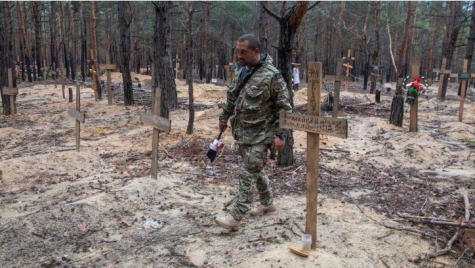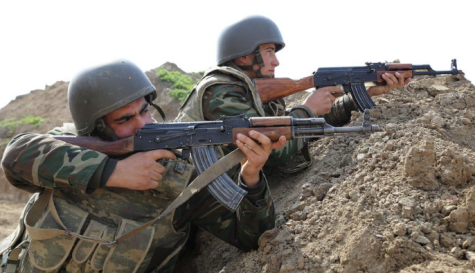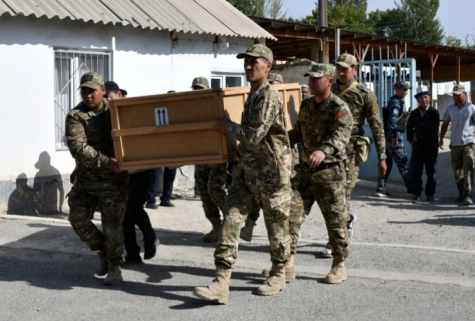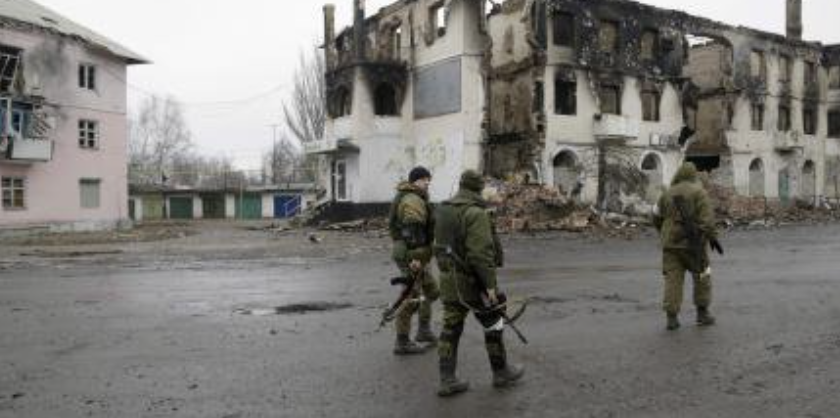Continued Conflict Rocks Former Soviet Union
Fighting has broken out or continued in three places in the former Soviet Union – Ukraine, Armenia,Tajikistan/Kyrgyzstan – in the last few weeks.
The most recent movements in Ukraine have been the largest and most deadly. On 6 September, after months of virtual stalemate, The Ukrainian Armed Forces launched a sweeping counteroffensive against Russian troops in Kharkiv oblast, in the northeast of the country. After four days (10 September), the Ukrainian army had recaptured up to 2,500 square kilometers of Russian-held land, including the strategic logistics centers of Izyum and Kupyansk.
The recapture of Kupyansk especially spells bad news for the Russian Army. Much of Russia’s resupply routes run via rail, and Kupyansk is the center for all Ukrainian railways that run north. This effectively means that everything west of the Oskil River in Kharkiv province has been given back to the Ukrainians. Russian forces are already undersupplied and poorly trained, and any attempt to reinforce or resupply troops in the north is likely bound for failure.
As the Ukrainian army advances, reports of mass graves have been leaking out of towns and villages in Kharkiv oblast. Hundreds of unmarked graves have been discovered in the outskirts of Izyum, most of them containing civilian bodies, including entire family units. The majority are believed to have died violently, and many were found with rope burns around their necks and hands.
Russian state media has been hesitant to acknowledge that Russian forces have suffered a frankly devastating defeat. Much of this information is being conveyed in large Telegram groups, in which generals and pro-Russian propagandists deny that Russian forces have been defeated. Instead, the rout of the Kharkiv forces has been couched as a “regrouping” or a “tactical decision”. Veterans and military experts in Russia, however, are starting to break from the hardline Putinist narrative, raising questions about the competence of Russian troops and even Russian command.
 In a renewal of the Nagorno-Karabakh war, clashes have broken out along the Azerbaijan-Armenia Border. Azerbaijan invaded the Nagorno-Karabakh region in 2020. The region is mainly Armenian ethnically, and prior to the war in 2020 the Armenian army and the disputed state of the Republic of Artsakh had controlled most of the disputed region, which is internationally recognized as part of Azerbaijan. The conflict dates back to old Soviet borders in the region – Nagorno-Karabakh requested to be transferred to Armenia in the late 80s. Azerbaijan refused. In response, the both governments conducted a series of pogroms against both Armenian and Azerbaijani settlements in the area, sparking a large ethnic conflict which Armenia won decisively, gaining control over the region.
In a renewal of the Nagorno-Karabakh war, clashes have broken out along the Azerbaijan-Armenia Border. Azerbaijan invaded the Nagorno-Karabakh region in 2020. The region is mainly Armenian ethnically, and prior to the war in 2020 the Armenian army and the disputed state of the Republic of Artsakh had controlled most of the disputed region, which is internationally recognized as part of Azerbaijan. The conflict dates back to old Soviet borders in the region – Nagorno-Karabakh requested to be transferred to Armenia in the late 80s. Azerbaijan refused. In response, the both governments conducted a series of pogroms against both Armenian and Azerbaijani settlements in the area, sparking a large ethnic conflict which Armenia won decisively, gaining control over the region.
On 12 September, Azerbaijan began shelling border towns, including residential districts. They moved troops into Armenian territory, beginning a low-level occupation of some border villages and created a buffer zone of around 7.5km. Reports of corpse mutilation (including a video of Azerbaijani sources mutilating a female soldier) have been widespread. A ceasefire was recently signed, and the final death count of the clashes sits at around 215.
 Border clashes have also broken out between Kyrgyzstan and Tajikistan over politically unimportant farming villages. Border conflicts are nothing new to either country – the genesis of which can also be traced to the Soviet Union. In the 1920s, the Soviet government divided Central Asia into five republics, but the borders were far from clean and orderly. They included hundreds of ethnic enclaves embedded within the territory of the other republics.
Border clashes have also broken out between Kyrgyzstan and Tajikistan over politically unimportant farming villages. Border conflicts are nothing new to either country – the genesis of which can also be traced to the Soviet Union. In the 1920s, the Soviet government divided Central Asia into five republics, but the borders were far from clean and orderly. They included hundreds of ethnic enclaves embedded within the territory of the other republics.
On 14 September, Tajik forces entered Kyrgyz territory and shelled at least two villages. The resulting engagements were relatively minor in scale. While there has not been a full-scale invasion, around 140 people on both sides have been killed so far. 137,000 people were evacuated from the Batken region in Kyrgyzstan, but motivated by the potential of a ceasefire, they have begun to return. Iran has expressed willingness to negotiate a ceasefire, but no agreement has been reached so far.
All three of these conflicts can be in some part explained by Russia. As the Russian army is continually bogged down in Ukraine, they have been unable to project their power throughout their waning sphere of influence. Armenia is funded and supplied by Russia, using Russian-made drones and artillery. The clashes in Kyrgyzstan and Tajikistan can also be explained in part by weakening Russian influence. Both Kyrgyzstan and Tajikistan have, for the last 100 years, been economically reliant on Russia, and so they have traditionally kneeled to the demands of the large power. However, as China and India (both close neighbors to the countries) become increasingly powerful and move into the Central Asian market, their reliance on Russia has been steadily declining. Russia’s weakening ability to project its power in places like Syria, Armenia, and Kyrgyzstan increasingly depends on its ability (or inability) to end the war in Ukraine and rebuild its crippled armed forces.







